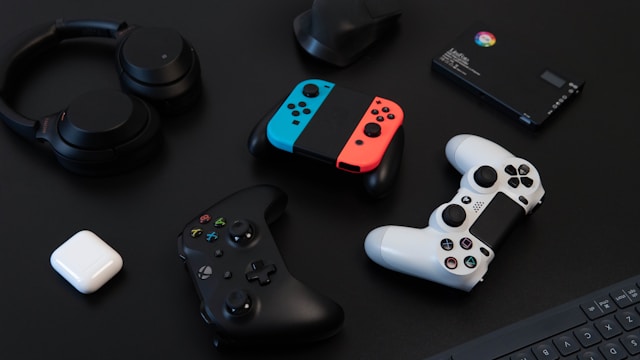Research is one of the key factors that underpin all UX designs. After all, you design for the sake of your users. The best way to serve your users is with a wealth of research on their pain points and behaviors. There are many ways to perform research, one of which is contextual inquiry.
This method could have major benefits for your research, providing plenty of valuable data. Here’s everything you need to know about contextual inquiry in UX.

What Is Contextual Inquiry?
Firstly, what is contextual inquiry? In a literal sense, it’s an inquiry that takes place within context. In other words, it refers to research and interviews that take place in a natural environment.
Above all else, it involves observation, where the researcher watches the interviewee perform their tasks. Contextual inquiry in UX involves watching the participant use a digital product. Unlike a traditional interview, this gives the researcher key insights into the full process. During traditional interviews, the participant may forget things or leave things out. However, contextual interviews prevent this from happening because the researcher can observe the process.
There are pros and cons to this method, as with any research technique. That said, many UX researchers find it useful for the context it provides. Instead of receiving reams of random data, you also obtain a way to contextualize those data. As a result, you eliminate guesswork as much as possible.
Contextual Inquiry vs. Interview
You may sometimes hear people refer to this technique as a contextual interview. These terms refer to the same practice of interviewing subjects within their natural environment. The Nielsen-Norman Group refers to it as contextual inquiry and lists it as an essential UX research technique.
When it comes to contextual interview vs. inquiry, there are several benefits of the former. Primarily, the researcher gains an insight into the context surrounding the use of a product. For example, you can see if the participant uses multiple monitors, whether they use third-party tools, and so on. This insight can lead to better lines of questioning and also gives the researcher a chance to correct their misinterpretations.
There is always a concern, though, that the participant will default to ‘interview mode.’ This refers to the traditional question-and-answer format of most interviews. Unfortunately, this removes the context from the situation. It’s best if the researcher can simply observe the user working with minimal interruptions.

How To Do Contextual Inquiry
Contextual inquiries tend to follow a similar format. However, as semi-structured interviews, they are also flexible and open to interpretation.
Base each inquiry on these four principles:
- Context: Crucially, the interview should take place in context. Do not perform the inquiry in a lab or interview room. Instead, it should take place at the participant’s place of work or wherever they use the product.
- Partnership: During the inquiry, the researcher and participant need to be partners. Unlike a traditional interview, the researcher should not control the entire discussion. Instead, both parties can direct the conversation.
- Interpretation: The whole point of a contextual inquiry is to develop a comprehensive understanding of how the participant works. The researcher should aim to develop a shared understanding of the user’s mental models. To do this, they need to carefully observe and take onboard feedback from the user.
- Focus: The researcher must understand the purpose of the research. Knowing what to look for can guide the observation and interviews.
Based on these pillars, the researcher can perform a contextual inquiry however they like. It’s a different skill to regular interviews, as it’s important not to fall into the trap of a traditional interview. Instead, it’s about observing and understanding.

4 Stages of a Contextual Inquiry
The Nielsen-Norman Group defines a 4-part structure for contextual inquiry. This structure can help you plan a session that’s helpful for your research. However, you should always try to direct the inquiry in a way that informs your research.
Before these stages begin, you need to perform additional research. This includes deciding the scope of your questions, setting the sample size, and selecting participants. Make sure your inquiry is fully relevant to your product.
1. The Primer
Most participants will be aware of how traditional interviews work. As a result, you will need to make it clear from the get-go that this is not an interview.
Start by introducing yourself and engaging in casual conversation. Beginning casually means your participant gets an idea of what to expect. It allows you to build rapport so that the participant knows this is not as formal as a traditional interview.
Following the initial conversation, you can explain the process of the contextual inquiry. Tell them what you intend to achieve, and make it clear that the participant can interrupt and correct your interpretations.
Before the official inquiry begins, you can also ask the participant for a summary of the work. They may explain their idea of the process to you before you begin. This way, you can start to think of questions. That said, be prepared to validate these explanations during the inquiry.
2. The Transition
Next, make a clear transition into the contextual interview. Let the user know that you will observe as they go about their process. You should also tell them that you may interrupt whenever there is something interesting to discuss. Make it clear that they can communicate with you if it is a bad time to interrupt. Otherwise, they may default to interview mode.
3. The Interview
The contextual interview itself consists of two parts: observation and discussion. These two phases may move in cycles, depending on the nature of the process.
Hopefully, the interview will take on its own rhythm. As the user works, make sure you’re aware of the external resources they use. Ask them about their standard steps or uncommon variations and their motivations behind them.
If you observe something you don’t understand, ask about it. Make sure you ask open-ended questions so as not to guide the participant. Allow the participant to correct your misinterpretations or validate your assumptions. If you have a strong hypothesis, voice this and let the participant confirm or deny it.
4. The Wrapup
At the end of the interview, quickly review your notes. Ask the participant any clarifying questions, and then summarise your interpretation of events. This is the participant’s final chance to correct your understanding.
Following the interview, it’s a good idea to write up your notes right away while your memory is fresh.

Contextual Inquiry Questions
Every contextual inquiry is different because it focuses on a specific scope. However, there are some general contextual inquiry questions to inspire you.
- What did you enjoy about this product?
- What issues did you face using this product?
- When do you usually use this product?
- Will you use this product for professional or personal reasons?
- Will you use this product alone or as part of a team?
- Do you prefer (a) or (b)?
- What would make you choose this product over that of a competitor?
You can alter these questions to suit the product you are inquiring about.
Contextual Inquiry Example
Contextual inquiries are not always relevant to UX research; it depends on what you are researching.
This contextual inquiry example might help you decide if this research technique is for you. An e-commerce website is looking to improve its online ordering process. The UX researcher assigned to the task can observe customers using the website on their own devices. This gives them an overview of the full checkout process, including where users experience friction.
In a regular interview, customers might forget their common actions or irritations, but a contextual interview avoids this.
Another example is software tools. A UX researcher might be able to interview workers on how they use software tools at their jobs. However, a contextual interview provides more information. For example, you might discover that the interviewees missed out on several steps, or they cross-reference from other screens and tools.
How To Use AI for Contextual Inquiry (UX)
UX contextual inquiry is changing. Primarily, contextual interviews help researchers to analyze their data. In today’s world, many researchers are turning to artificial intelligence (AI) for this exact purpose.
If you want to know how to use AI for contextual inquiry, UX researchers can employ it to analyze data. Take Uber, for example. The popular ride-share app uses AI to analyze trip data. The built-in AI assesses where and when users need rides. As a result, Uber can offer faster and more efficient service during peak hours.
Meanwhile, the music streaming app Spotify interprets user listening habits to create personalized playlists.
Notably, these uses of AI do not include user interviews. Despite AI’s growing prevalence, face-to-face interviews with users still have great value. Following an interview, you can use generative AI tools to summarize your points. Alternatively, you can plug data into generative AI tools to gain some potential information on context.
However, it’s important to note that this is not the same as working with real users. Ultimately, there is still some guesswork involved. While the future of UX research could involve a combined approach, there is still real value in user interviews.

Upgrade Your UX Design With Page Flows
Following a contextual inquiry, researchers can collaborate with designers to create a useful product. Ideally, several other methods should follow the inquiry, such as affinity mapping and empathy mapping. In the end, you should be able to design an innovative solution to user pain points.
If you’re looking for design inspiration, why not learn from proven products? Page Flows is a helpful resource for finding interaction design ideas. Get started today to access our growing library of user flow recordings and stay up-to-date with current design trends.





